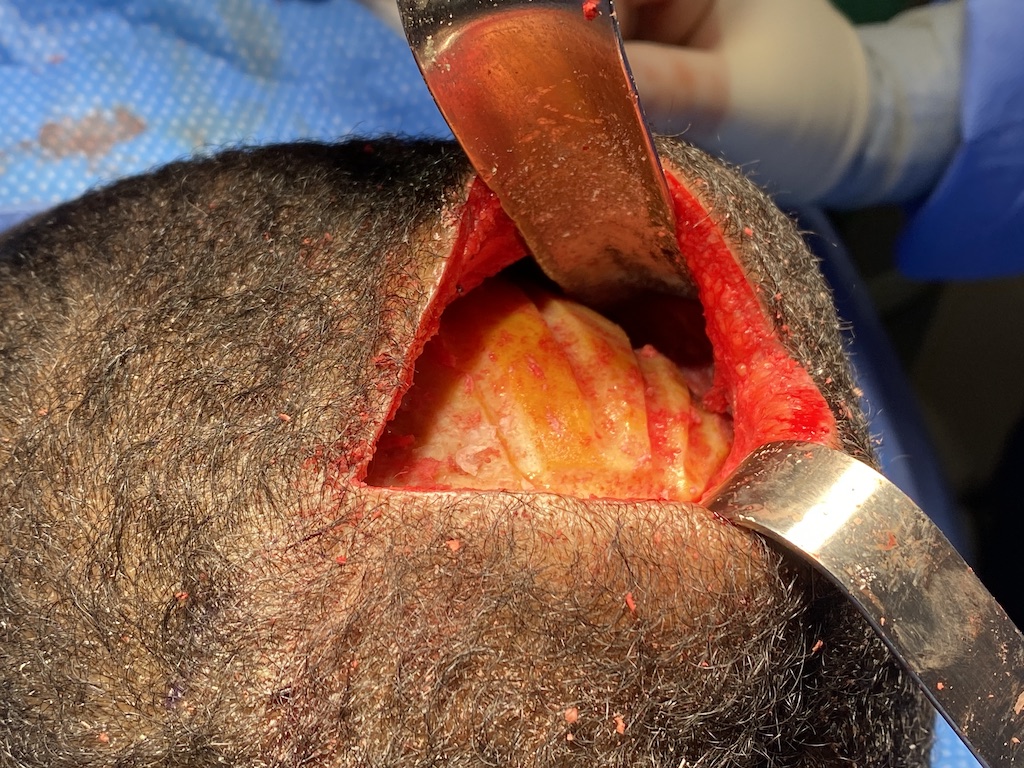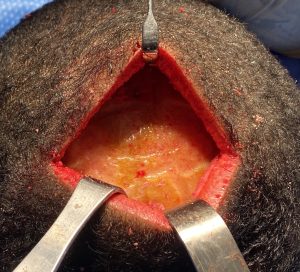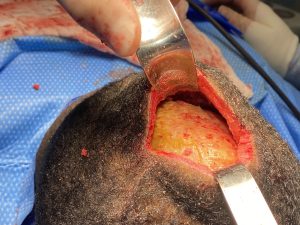Background: The head, and more specifically, the skull can be reduced like almost any other face or body part. The desire for skull reductions comes in different magnitudes of size. Some enlargements are small, such as osteomas, bumps and horns, and can usually be completely removed as the problem is relegated to the outer cortical layer of the skull. Larger skull reductions involve plates of bone in which the amount of reduction may be more incomplete as the same outer cortical limit of removal applies regardless of the size of the hypertrophy.
In larger skull reductions done for aesthetic purposes the length of the scalp incision is limited…which introduces the need for a different approach to the reduction. If unlimited surgical access is done through a long bicoronal scalp incision the wide open exposure allows for a more back and forth movement of the high speed handpiece and burr. But through a smaller scalp incision the visibility is limited to long tunnels using retractors in which a back and forth burring reduction method over a large skull area can not be effectively done.
Aesthetic skull reductions, regardless of the exposure, must be done a bit like mowing the lawn. There has to be a specific pattern or regimen to the reduction to ensure a smooth and even removal and so no area is missed. But unlike mowing the lawn aesthetic skull reductions are done through with limited exposure so the pattern technique to doing them has to take a more ‘central’ approach.
Case Study: This male was bothered by the raised area of the crown of his skull in a circumferential manner. The area of protrusion was similar to wearing a thin cap over the crown. By palpation the edges of the protrusions could be felt like the edge of a small ring.
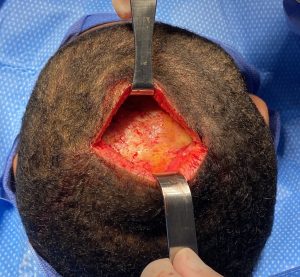
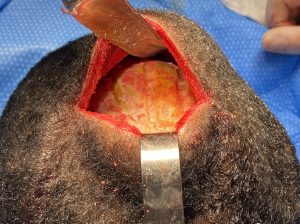
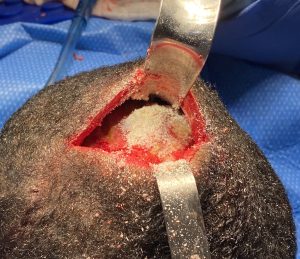
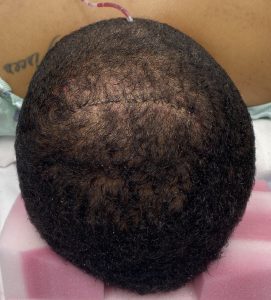
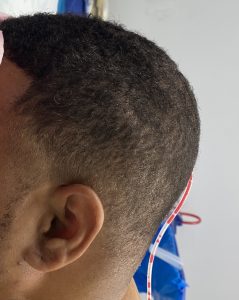

Key Points:
1) All skull reductions involve a decortication of the outer layer of the skull whose magnitude of effects depends on the amount of surface area reduced.
2) Aesthetic skull reduction emphasize a limited scalp incision for which a radiating pattern of grid bone reduction is used.
3) Larger surface area skull reductions are tedious but an effective result depends on diligence in sticking with the grid pattern of bone removal.
Dr. Barry Eppley
World-Renowned Plastic Surgeon

